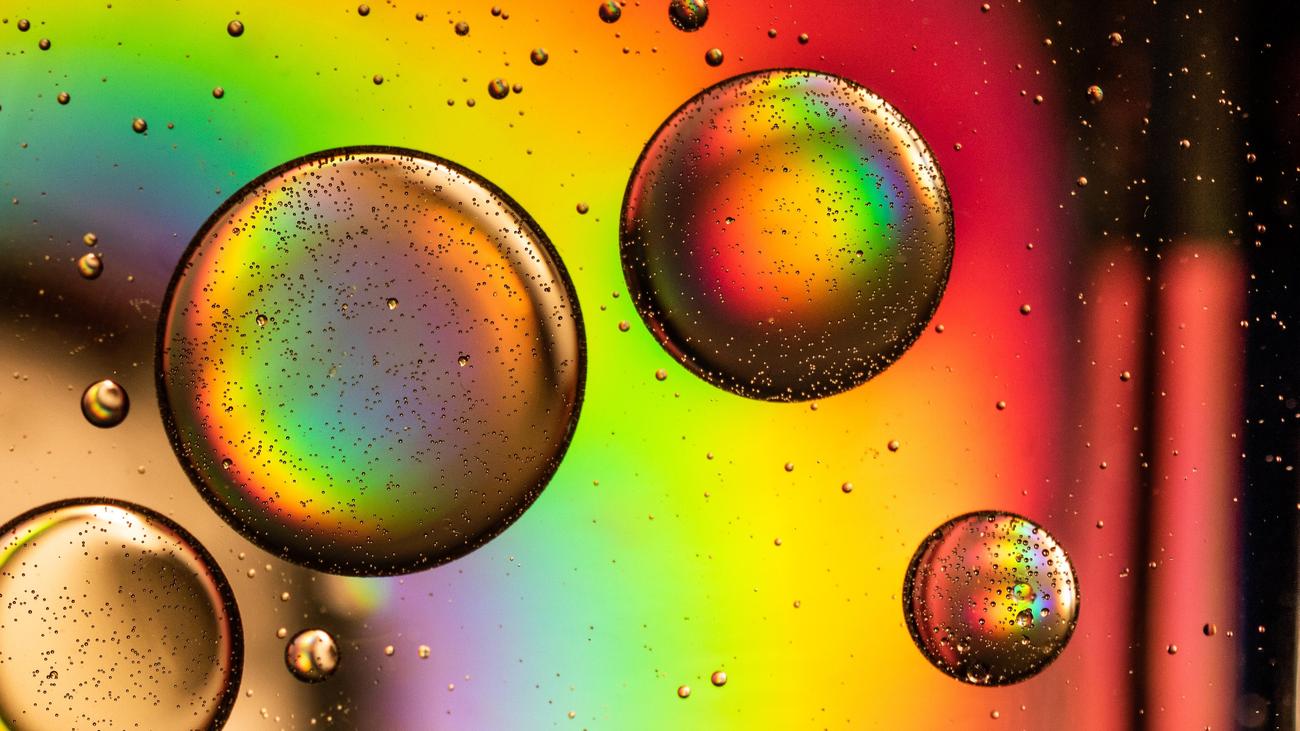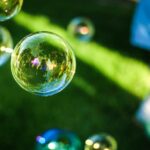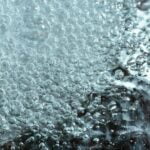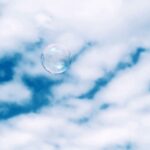If you have ever marveled at the ethereal beauty of bubbles floating through the air or reveled in the simple joy they bring to both children and adults alike, then prepare to be captivated. In this article, we will embark on an exploration of the enchanting world of bubbles, delving into their mesmerizing qualities and uncovering a trove of random facts that will leave you spellbound. Get ready to immerse yourself in the science behind these fascinating spheres, as we uncover the secrets and mysteries hidden within every shimmering bubble.
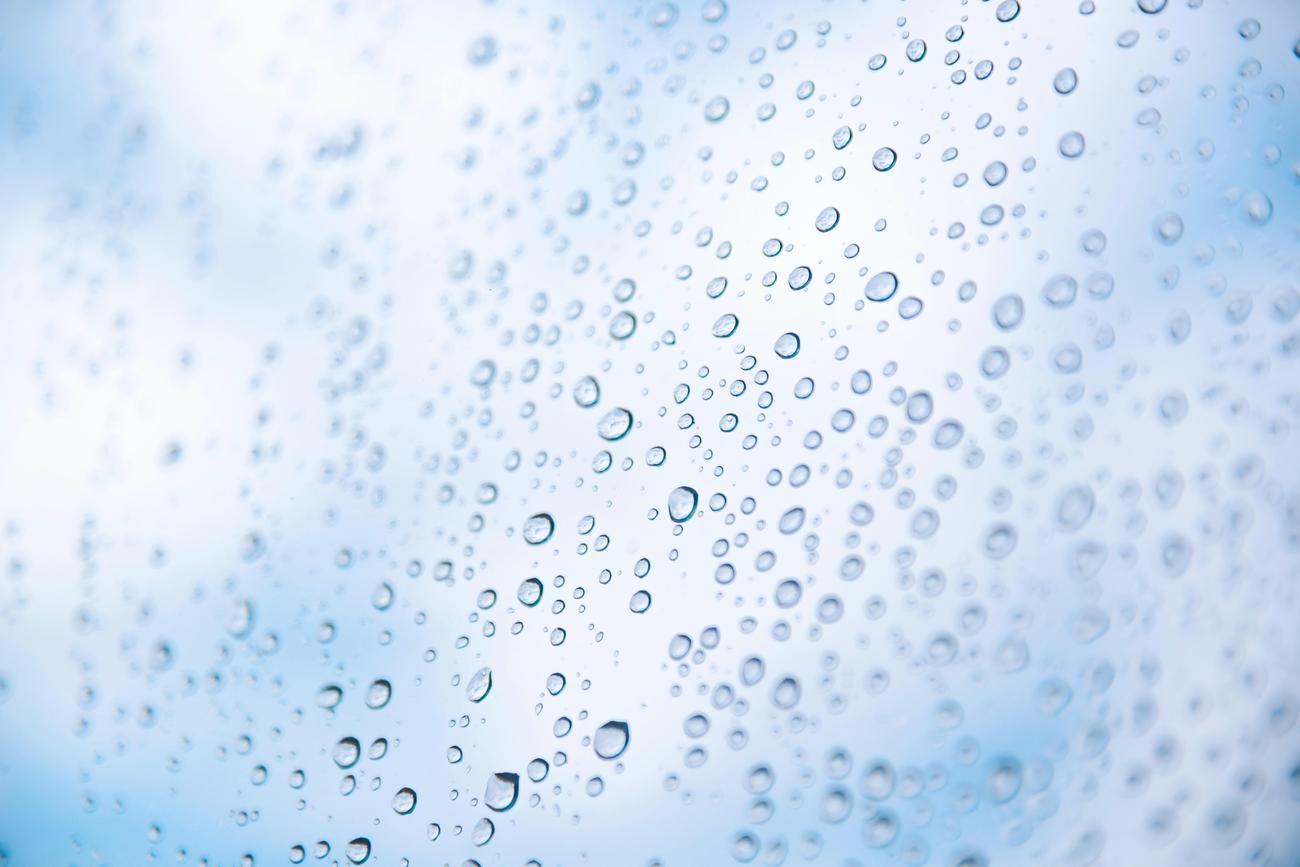
Random Facts About Bubbles
Did you know that bubbles, those mesmerizing spheres of soap and water, hold a world of scientific marvels within them? Here are some random facts about bubbles that will surely pique your curiosity and leave you amazed.
1. Bubbles Cannot Form in Space Due to the Absence of External Air Pressure
In the vastness of space, where there is no air to create pressure, bubbles simply cannot exist. Without the necessary air pressure, soap and water molecules cannot bind together to form the thin film that gives bubbles their characteristic shape and iridescent beauty.
The absence of external air pressure prevents bubbles from forming in the vacuum of space, highlighting the importance of atmospheric conditions for their creation.
2. The Largest Bubble Ever Measured Was 23 Cubic Meters in Size
Imagine a bubble so massive that it could engulf an entire room! The largest bubble ever measured was a staggering 23 cubic meters in size. This gigantic bubble was created using a specially designed wand and a solution containing a unique combination of soap and water. Such a majestic sight truly showcases the breathtaking potential of these delicate spheres.
The remarkable size of the largest measured bubble demonstrates the awe-inspiring capability of these delicate structures to encapsulate vast volumes of air.
3. Bubbles Produce Color Through Light Reflection and Interference
Have you ever marveled at the vibrant colors dancing on the surface of a soap bubble? These mesmerizing hues are a result of light reflection and the interference of light waves on the soap film. As light bounces off the inner and outer surfaces of the bubble, it undergoes constructive and destructive interference, creating a magnificent display of colors.
The captivating colors displayed by bubbles are a testament to the complex interaction between light and the thin film of soap and water.
4. Bubbles Can Freeze in Cold Temperatures
On chilly winter days, bubbles can work their magic in unexpected ways. When blown in air temperatures below 5 degrees Fahrenheit or 15 degrees Celsius, bubbles have the ability to freeze. As the frigid temperatures cause the water molecules to slow down and lose energy, the delicate soap film solidifies, creating delicate ice sculptures.
Freezing bubbles add a touch of enchantment to winter landscapes, showcasing the delicate nature of these ephemeral wonders.
5. The Round Shape of Bubbles is Due to Surface Tension and Elasticity
Have you ever wondered why bubbles are perfectly round? This is because of the amazing properties of surface tension and the flexible, stretchy nature of soap and water molecules. Surface tension acts as a contractive force, pulling the soap film into the smallest possible surface area, resulting in a spherical shape.
The round shape of bubbles is a testament to the interplay between the forces of surface tension and the elastic properties of soap and water molecules.
6. Bubbles Can Serve as Remarkable Weapons
Bubbles may seem innocent, but they can be surprisingly versatile. With their ability to obstruct vision or create distractions, bubbles have been utilized as ingenious weapons. From stealthy military tactics to playful pranks, bubbles have shown their intriguing potential beyond their enchanting appearance.
Bubbles possess hidden talents that extend beyond their role as captivating playthings, making them an unexpectedly powerful tool for various purposes.
7. Bubbles Are Used in Chemical Tests and Education
Bubbles have found their way into scientific experiments and educational settings. Their unique properties make them valuable tools for chemical tests, allowing scientists to observe reactions and determine the presence of certain substances. Additionally, bubbles are employed as teaching aids in schools to demonstrate concepts such as surface tension and the interference of light.
Bubbles serve as both a catalyst for scientific discovery and a fun educational tool, offering a hands-on way to explore fundamental scientific principles.
8. Soap Bubbles Are Ephemeral Beings
The lifespan of a soap bubble is fleeting, lasting only a few seconds before popping upon contact with other objects or surfaces. This ethereal existence adds to the enchantment and delicate nature of bubbles, emphasizing their transitory beauty.
The ephemeral nature of bubbles reminds us to cherish the fleeting moments of wonder that grace our lives.
9. Bubbles Offer a Platform for Learning
Bubbles provide a captivating and accessible way for children to explore scientific concepts. By observing the interplay of surface tension, light reflection, and the properties of soap and water molecules, young minds can gain a deeper understanding of the world around them. Bubbles become a gateway to scientific exploration and a catalyst for lifelong learning.
Bubbles offer children a delightful and hands-on experience, igniting their curiosity and fostering a love for scientific discovery.
With their enchanting beauty and mind-boggling properties, bubbles continue to captivate and ignite our curiosity. From their inability to form in space to their role as versatile tools in scientific experiments and education, bubbles showcase the wonders hidden within our everyday world. So take a moment to appreciate these fascinating spheres and let your imagination soar with the myriad of possibilities they hold.
Bubbles are not just for kids – they hold fascinating facts and secrets that will blow your mind! Did you know that bubbles can freeze in mid-air? Imagine seeing a breath-taking frozen bubble floating in the sky! If you’re intrigued and want to learn more intriguing facts about bubbles, click here: facts about bubbles. You won’t believe the mesmerizing science behind these delicate, yet captivating, spheres of pure magic. So, get ready to dive into a world of bubble wonders and expand your knowledge with these incredible facts!
Random facts about bubbles are truly captivating. Did you know that bubbles possess fascinating properties? From their shimmering colors to their delicate nature, bubbles never fail to amaze. If you’re curious to learn more about the mesmerizing world of bubbles, click here to explore the intriguing characteristics of bubbles. The formation process of bubbles is also a remarkable phenomenon worth delving into. Discover the secrets behind how bubbles come to life and embark on a journey into their mesmerizing creation process. Furthermore, bubbles possess unique characteristics that set them apart from anything else in the natural world. Uncover the mysteries behind these enchanting spheres by clicking here and diving into the world of unique bubble properties. So, whether you’re entranced by the science or simply adore the joyous moments associated with bubbles, satisfy your curiosity and explore these captivating facts now.
Bubbles: Nature’s Wondrous Spheres
[youtube v=”7odQ_qnznu4″]
Introduction
Bubbles have captivated us since childhood, enchanting us with their floating, shimmering presence. But beyond their playful and whimsical nature, bubbles hold a fascinating world of science and wonder. From the creation of bubbles by bubble artists to their role in scientific experiments and even as carriers of medicine, bubbles are much more than meets the eye.
The Enchanting Complexity of Bubbles
Although bubbles may seem simple, they are actually complex networks of molecules. The entire bubble structure relies on the interdependence of soap and water molecules, creating an electrical network within the bubble. This network, determined by the attraction between the soap and water molecules, can unravel if just a few molecules are separated. As bubble artist Tom Noddy puts it, “It’s a network, it’s an electrical network. It’s molecules in space and they’re linked to each other electrically.”
Bubbles and the World Around Us
Bubbles aren’t just a source of entertainment; they play vital roles in various aspects of our daily lives. For example, bubbles transport gases into liquids and vice versa, influencing the aroma and flavor of beverages like champagne, as well as the texture of ice cream. In the ocean, bubbles play a significant role in transferring gases from the atmosphere into the water, assisting in the absorption of carbon dioxide. These tiny, ephemeral spheres even create the sounds we associate with nature, such as the crashing of waves and the babbling of brooks.
Unveiling the Secrets of the Sea
Scientific research on bubbles has expanded our understanding of the oceans. By studying the bubbles formed when waves break, researchers gain insights into the intricate workings of our marine ecosystems. A staggering amount of carbon dioxide, approximately one-third of our total emissions, finds its way into the ocean via bubbles. Through measuring and analyzing the size and frequency of these bubbles, scientists can unravel the mysteries of the ocean’s surface and its impact on the global climate.
From Entertainment to Medicine
Bubbles have also found a place in cutting-edge technology and healthcare. Researchers have developed computers that use bubbles instead of electrical pulses to convey information, opening up new possibilities for computing. Doctors now employ microscopic bubbles to deliver medicine with precision, popping them using ultrasound to release drugs directly into targeted areas of the body. This innovative use of bubbles is revolutionizing the field of medicine, offering precise and controlled drug delivery methods.
Unlocking the Beauty of Bubbles
Bubbles, in all their delicate beauty, have the power to evoke cherished memories and bring joy to our lives. They may have a scientific explanation, and their properties can be analyzed and understood. However, there is an inherent beauty in their transitory nature. As Tom Noddy recalls his childhood experiences, “There is mathematics to it. It can be explained and discussed, but there’s something beautiful about that with a little bit of mystery.”
Conclusion
Bubbles, those captivating orbs that seem to defy gravity, hold a scientific marvel within their shimmering surfaces. From their complex electrical networks to their role in the oceans and advancements in technology and medicine, bubbles continually surprise and fascinate us. So, the next time you encounter a bubble, take a moment to appreciate its ephemeral beauty and remember the incredible science that lies beneath its surface.
“There is mathematics to it. It can be explained and discussed, but there’s something beautiful about that with a little bit of mystery.”
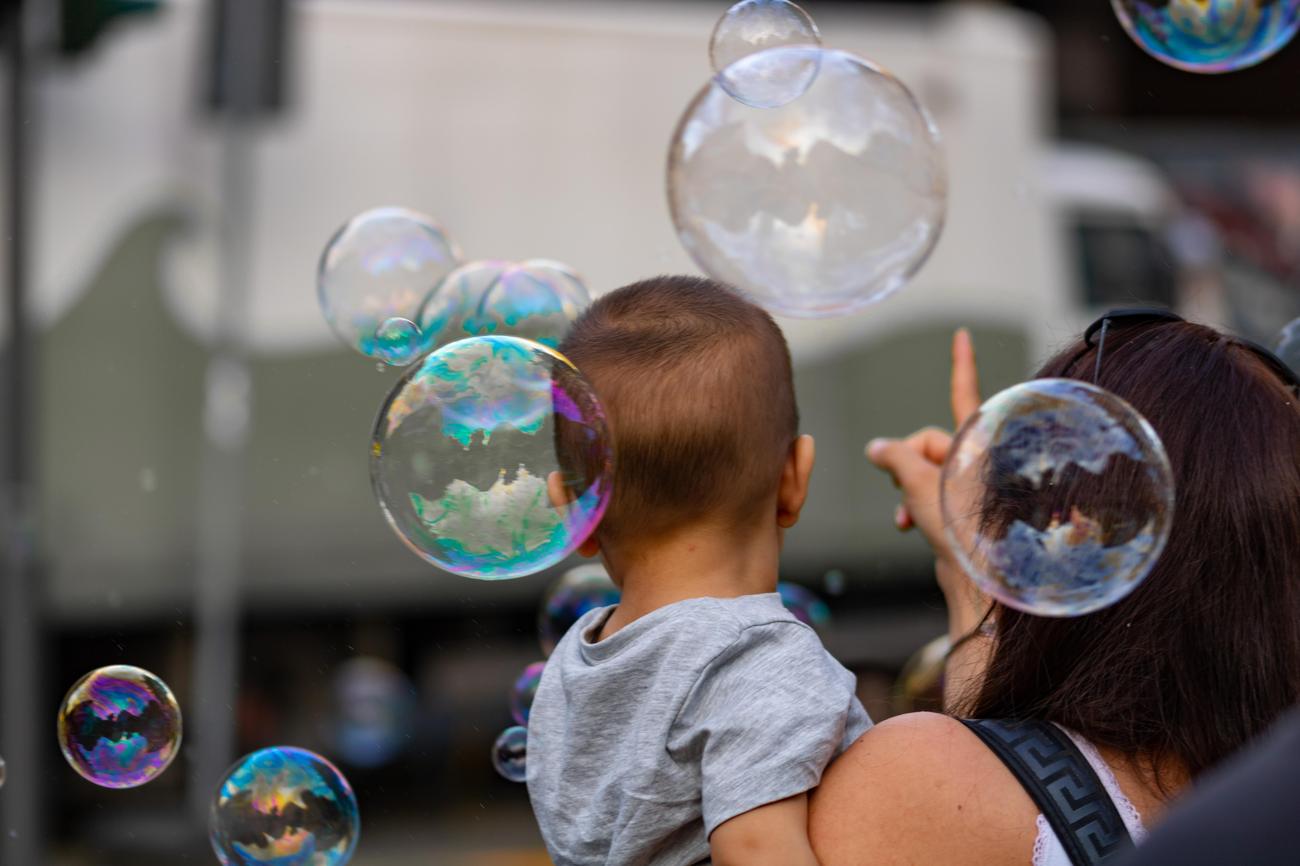
FAQ
Question 1
How do bubbles form?
Answer 1
Bubbles form when air or gas becomes trapped inside a thin film of liquid, such as soap and water. The surface tension of the liquid enables the formation of a spherical shape, enclosing the trapped air or gas.
Question 2
Why do bubbles have a round shape?
Answer 2
Bubbles have a round shape due to the surface tension of the liquid. The surface tension pulls the liquid molecules together, minimizing the surface area and creating a spherical shape, which is the most efficient shape to enclose a given volume.
Question 3
Why do bubbles produce color?
Answer 3
Bubbles produce color through the reflection and interference of light on the thin soap film. As light waves encounter the soap film, they reflect and refract, creating colorful patterns due to the different wavelengths of light interfering with each other.
Question 4
What determines the lifespan of a bubble?
Answer 4
The lifespan of a bubble is determined by its contact with other objects. Soap bubbles only last for a few seconds before they pop upon contact with anything solid. This is because the delicate soap film breaks easily when it comes into contact with another surface.
Question 5
In what ways are bubbles used in education?
Answer 5
Bubbles are extensively used in education to demonstrate various scientific concepts. They provide a hands-on learning opportunity for children to explore concepts such as surface tension, light reflection, and the properties of soap and water molecules. Bubbles also serve as a fun and engaging way to comprehend these scientific principles.
- China II Review: Delicious Food & Speedy Service - April 17, 2025
- Understand Virginia’s Flag: History & Debate - April 17, 2025
- Explore Long Island’s Map: Unique Regions & Insights - April 17, 2025
